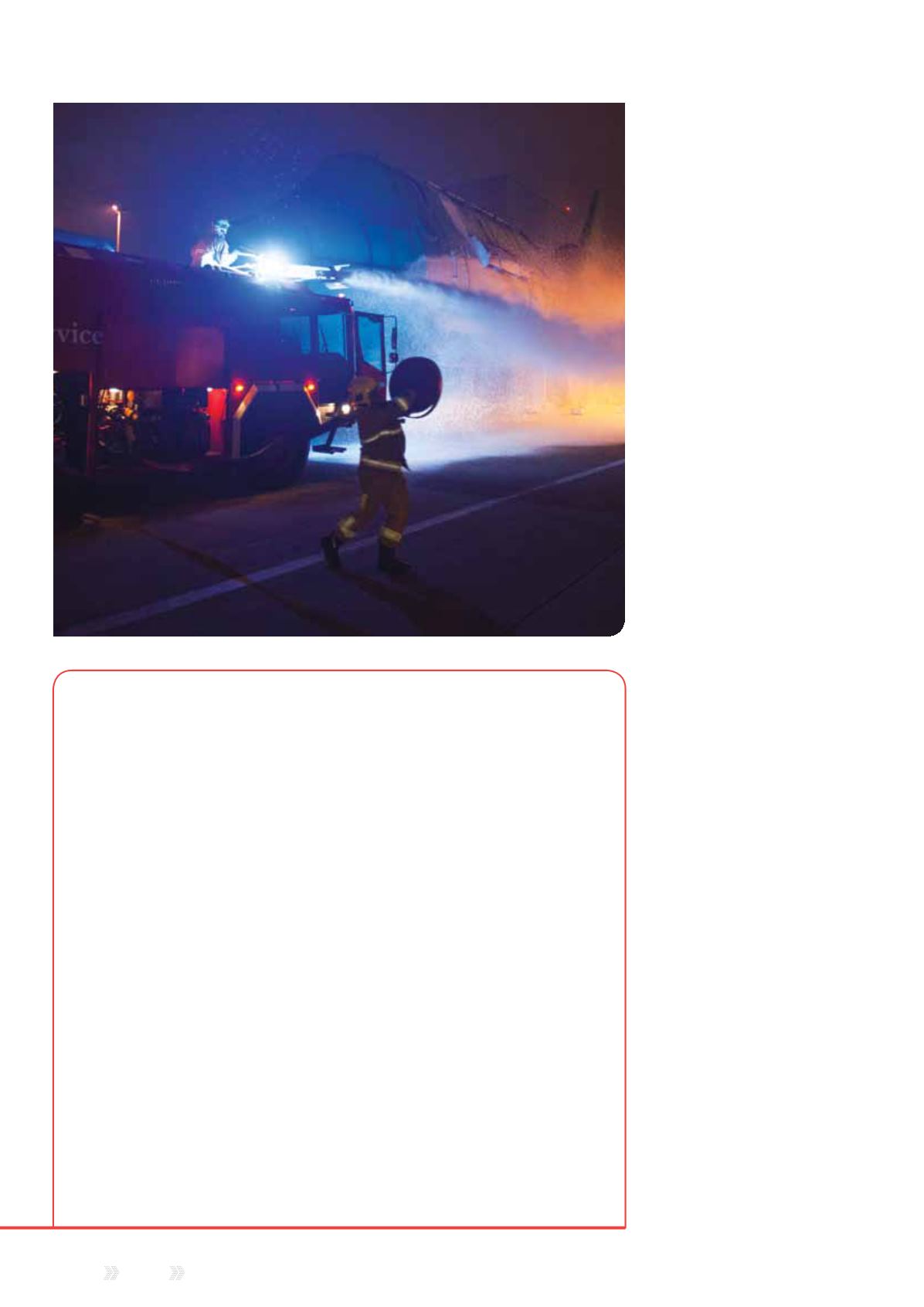
14
|
Reach
Issue 8 2015
middlemen or message-relay system.
These people need to make countless
decisions in a short space of time, and
they need the fastest and most reliable
communications system.
“I have to say that we didn’t choose
Airwave straight away, we looked
at all available options and the pros
and cons of each. However, after
a thorough review, we came to the
conclusion that Airwave was the only
choice that would give us a robust,
resilient and encrypted system that
would meet our needs.”
An organisation looking to gain
access to Airwave’s Emergency
Services Network (ESN) has to satisfy
certain criteria, and also obtain
security clearance from the Airwave
Accreditation Secretariat (within the
Home Office) for a TETRA Encryption
Algorithm 2 (TEA2) sub-licence. As
a privately-owned service, Heathrow
Fire and Rescue does not form part of
the Fire and Rescue Services of Great
Britain which meant it was necessary
to obtain a licence.
“One word sums up the reason
behind the success of this initiative,
and that is ‘teamwork’ – evident
from the start of the process,” said
Gary. “Once we had outlined the
reasoning and the proposal to have
the AfDM, AOM, and Heathrow Fire
and Rescue on the same system
as the emergency services, we had
immediate buy-in from everyone that
we needed to make it happen.
“We are very grateful to the Home
Office and Airwave, who worked
together to ensure that a TEA2
licence was issued to Heathrow
Airport Holdings Limited, and to
the Metropolitan Police Service
(MPS), who provided three handheld
terminals, one to me, one to the AOM
team and one to the AfDM team.
Together with the MPS, we became
the airport duty command team.”
Gary explained that the terminals
were reconfigured to have one main
operational channel for the Airport
Duty Command team to use for day-
to-day operations.
“We did this to give each other an
informal heads-up on any situation
that looks like it might develop into
an incident. The radios also have six
MPS emergency services channels
and eight London region Mutual Aid
channels, for interoperability in a major
London Heathrow – the hub of the civil
aviation world
In 1930, British aeronautical engineer and aircraft builder Richard Fairey paid
the Vicar of Harmondsworth £15,000 for a 150-acre plot to build a private
airport to assemble and test aircraft. Complete with a single grass runway and
a handful of hastily erected buildings, Fairey’s Great West Aerodrome was the
humble precursor to the world’s busiest international airport, Heathrow.
During World War II the government requisitioned land in and around the
ancient agricultural village of Heath Row, including Fairey’s Great West
Aerodrome, to build RAF Heston, a base for long-range troop-carrying aircraft
bound for the Far East. Work demolishing Heath Row and clearing land for the
runways started in 1944. However, by the time the war had ended the RAF no
longer needed another aerodrome and it was officially handed over to the Air
Ministry as London’s new civil airport on 1 January 1946.
By the time Heathrow celebrated its 60
th
anniversary in 2006 it had handled
around 1.4 billion passengers on more than 14 million flights. Today Heathrow
is the world’s busiest international airport and the hub of the civil aviation world.
It is owned and run by Heathrow Airport Holdings Limited (formerly BAA), which
also owns and runs Aberdeen, Glasgow and Southampton Airports.
A record 7.05 million passengers travelled through Heathrow in August 2014,
making it Heathrow’s busiest ever month and the first time the airport has handled
more than seven million passengers in a single month. Sunday 17 August 2014
also saw Heathrow’s record busiest day, with 241,412 passengers passing
through the terminals.
One of the regular ‘major incident’ training exercises conducted by the Heathrow team


